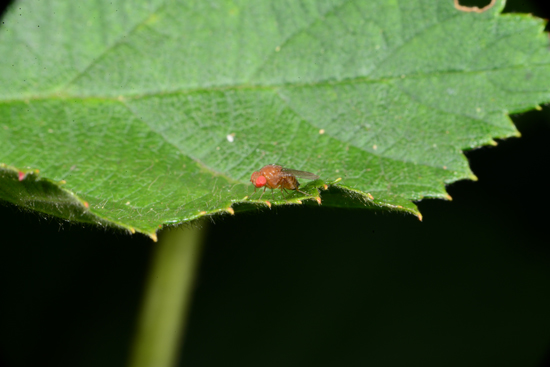Spotted winged drosophila could be problematic in small fruit
Spotted winged drosophila could be problematic in small fruit

As many small fruits begin to ripen, home gardeners need to be on the lookout for a new insect pest, said Ric Bessin, extension entomologist with the University of Kentucky College of Agriculture, Food and Environment.
Spotted wing drosophila was detected for the first time in two UK integrated pest management traps in 2012. This year, the fruit fly first appeared in the state at the end of June and was causing problems for berry producers by the middle of July. Bessin said he’s received reports of the insect from all over the state. While the fruit fly’s primary target is small fruits, including berries and grapes, it is also known to attack cherries, tomatoes and peaches in other states.
“Fortunately, all of the state’s strawberries and most of the blueberry crop were already harvested before it appeared this year,” Bessin said. “Later season berries, including blackberries and raspberries, are going to be extremely susceptible.”
The spotted wing drosophila differs from other fruit flies in that the females will slice into nearly ripe, healthy fruit and lay their eggs just below the fruit skin. Other fruit flies are typically attracted to rotting or overripe fruits or vegetables.
A spotted wing drosophila can complete a generation in as little as a week and is so tiny that growers may not notice they have a problem until the fruit starts to soften or maggots emerge.
Spotted wing drosophilas are most active when temperatures are between 68 and 86 degrees Fahrenheit.
Gardeners, who want to maintain yields in their small crops, have a couple of insecticides available to them. However, they need to make sure they carefully read the product’s label and follow the pre-harvest intervals, which is the time between insecticide application and when the fruit can safely be harvested, Bessin said.
Gardeners should remove overripe and damaged berries from around their plants at least every other day, as they could be infested with the insect. Burying infested fruit is not helpful, as the insect has been known to emerge from the soil after very deep burials. To kill spotted wing drosophila, place infested fruit in clear plastic bags and leave the bags in the sun.
The insect appears to overwinter very well in the United States and will develop on wild host plants including wild brambles, pokeweed and honeysuckle. Removing these plants from the landscape should help home gardeners keep pest populations to a minimum, Bessin said.
The UK Cooperative Extension Service has two publications related to spotted wing drosophila biology, identification, monitoring and management. They are available at http://www2.ca.uky.edu/entomology/entfacts/entfactpdf/ef229.pdf and http://www2.ca.uky.edu/entomology/entfacts/entfactpdf/ef230.pdf and local extension offices.
Extension Horticulture

